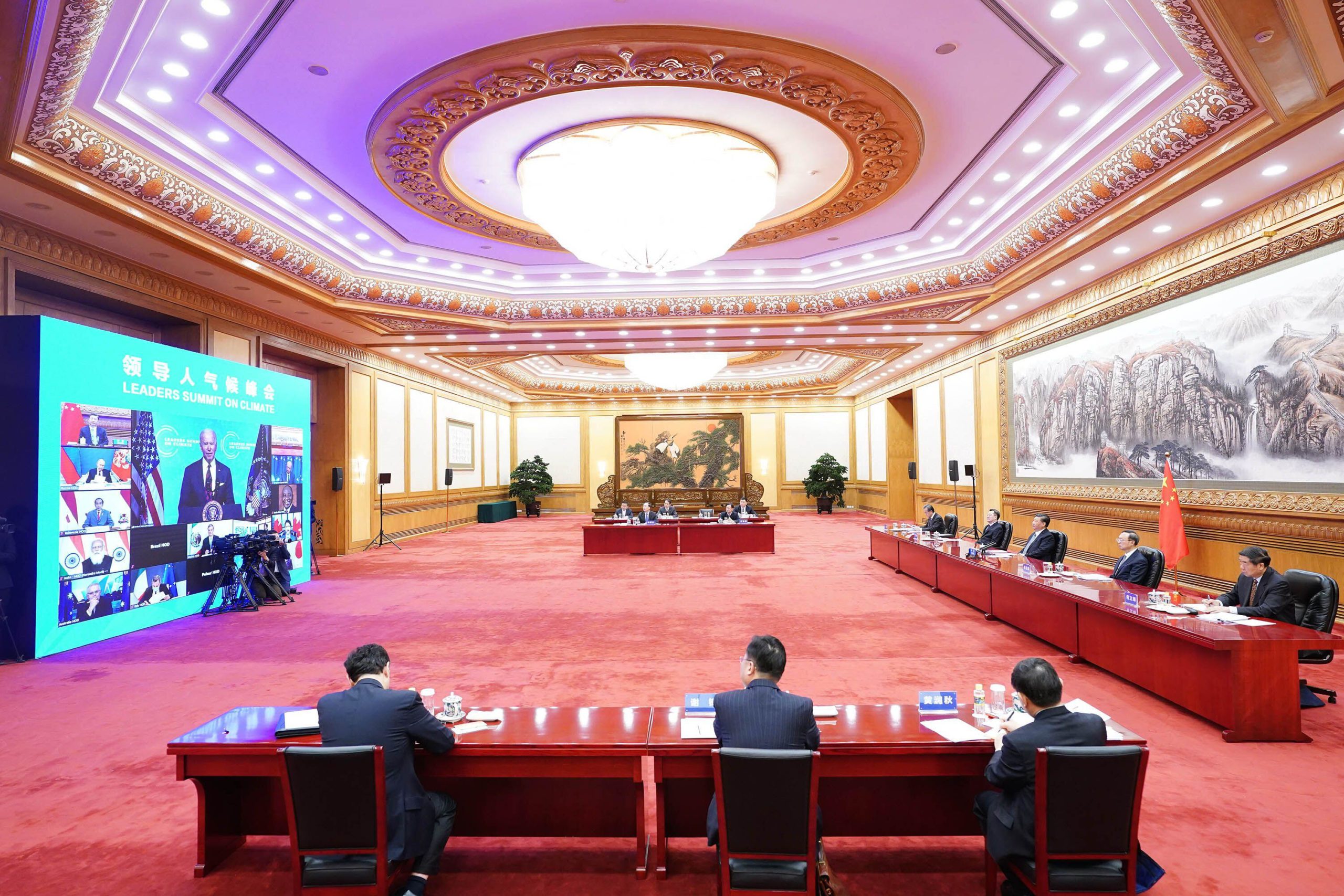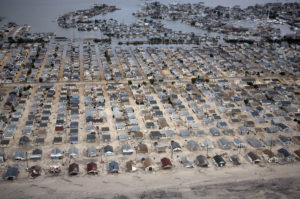The Biden administration is actively working to combat climate change, and this is creating new opportunities for China–US climate diplomacy.
In the 2014 China–US Joint Announcement on Climate Change, the presidents of both countries agreed that “climate change is one of the greatest threats facing humanity” and that the “two countries have a critical role to play in addressing it”. Seven years later, and with the climate crisis worsening, the need for China and the United States to cooperate on tackling it has become even more urgent.
Opportunities
China–US relations worsened during the Trump administration, with climate cooperation grinding to a halt. The two countries are still a long way from the “honeymoon period” seen around 2014. But with Biden in power and actively responding to the climate crisis, they again share common ground, providing a foundation for cooperation.
The Biden administration has made climate a priority for its domestic agenda, hoping this will give it more influence and leadership in global climate governance. It has said it wants to ensure global climate security and ensure humanity continues to develop. Meanwhile, China has put forward its “Beautiful China” concept, and President Xi Jinping has spoken of a “community of common destiny for mankind”. Addressing the climate crisis, which threatens that very community, is therefore an integral part of Xi’s agenda. The climate crisis is a danger for both nations, and can be solved by neither alone. Accepting this is both a precondition and foundation for climate cooperation.
The US–China Joint Statement Addressing the Climate Crisis, signed in April this year, sends positive signals and provides new opportunities for such cooperation. It points to key areas for climate action during this decade, emphasising decarbonisation and use of renewable energy in carbon-intensive sectors. It also lists key areas with rapidly growing emissions such as agriculture, buildings, transportation, non-CO2 greenhouse gases, aviation and shipping.
Although China–US relations are struggling, there is cause for confidence. That both sides hope to push forward with bilateral cooperation on the climate provides a rare window of opportunity, which both sides should seize.
In the first 100 days of Biden’s presidency, the US held three sets of climate talks with China. Even at the contentious high-level talks in Alaska in March, both sides stressed that combatting climate change is necessary and important.
By mid-April, the US special climate envoy, John Kerry, had accepted an invitation to visit China and signed the US–China joint statement on the climate. Some days later, President Xi attended the online Leaders’ Summit on Climate, welcoming the return of the US to multilateral climate governance and saying China looked forward to working on climate governance with other nations, including the US. The two countries’ shared view on the climate has allowed frequent contact, showing a willingness and determination to start cooperation.
With that good start in place, it is now important for China and the US to use regular bilateral talks and cooperation to share best practices and experiences, as well as low-carbon innovations, pilot projects and applications.
Technological innovation will be crucial to cutting the cost of emissions-reducing technology, and China and the US have complementary strengths here. China–US cooperation on climate change tech has become highly politicised, but it would be worthwhile to insulate discussions on technological cooperation from other issues in order to find more mutually beneficial opportunities to work together in this field.
To this end, both countries should consider restarting the network for communication, cooperation and exchanges under the framework of the Sino-US climate-smart low-carbon city summits. This would support discussions and reciprocal visits between professionals and businesspeople, increasing cooperation and communication in fields such as new energy supply chains, energy efficiency improvement and green buildings.
Challenges
Huge challenges remain, most notably the ongoing stalemate in bilateral relations. The Biden administration may be doing more on the environment, but there have been no obvious changes in general policy towards China since the Trump administration. In particular, Biden’s comments on China during a recent trip to Europe left China feeling the chill. Biden has written that while China and the US have common interests – including climate change, non-proliferation and global health security – “the United States does need to get tough with China”. His Plan for a Clean Energy Revolution and Environmental Justice calls for a series of audits of climate action around the world, ensuring those who do not fulfil, or even undermine, the Paris Agreement pay the price. That is clearly aimed at China and will put China’s use of coal under pressure. Criticism of projects China is building under the Belt and Road Initiative, and even preparations for sanctions, has been constant.
In the short term, there are two main obstacles to cooperation on climate change: differing interpretations of “common but differentiated responsibilities” and a lack of continuity in US climate policy.
On the first, China and the US, the world’s largest developing and developed nations, disagree on their capabilities and responsibilities when it comes to global climate governance. Those differences have not been alleviated by the change in the US administration and are reflected in the excessive expectations the US has for China’s climate goals, which it regards as inadequately ambitious – in particular the 2030 peak carbon target.
Secondly, repeated changes in US climate policy directly affect, and challenge, China–US climate diplomacy. US climate policy lacks a long-term and stable foundation, and abrupt changes in that policy are a concern for China. The best approach for China is to continue taking action and follow its low-carbon pathway, while using the window of opportunity offered by the Biden administration to restart various bilateral climate cooperation platforms, and build confidence through professional exchanges.
In the medium- and long-term, humanity’s window to respond to climate change is shrinking. The UN’s 2020 Emissions Gap Report said that “so far, the opening for using fiscal rescue and recovery measures to stimulate the economy while simultaneously accelerating a low-carbon transition has largely been missed”. Keeping temperatures under control will require profound and sustained changes in emissions from the energy and industrial sectors. Every country, including China and the US, needs more ambition and tougher action.
Both China and the US face their own challenges in maintaining the necessary corps of climate diplomats. Currently Xie Zhenhua and John Kerry, both old hands, are responsible for the actual diplomacy. Both in their seventies, the two men regard their work as a calling, a responsibility to their respective nations and to humanity as a whole. Obviously, many factors have contributed to how China and the US cooperate on climate change and the implementation of the Paris Agreement, including the individuals involved in the process. For example, the hard work by experts and officials on both sides has been hugely important: it took two years of closed-door talks to bring about the 2015 joint statement and the signing of the Paris Agreement. The negotiators have had to understand and accept each other’s positions and move past their roles as developed or developing nations, allowing for genuine communication and the successes that has brought about. But that work is not yet complete. Given the difficult relations between China and the US the unanswered question remains: who will follow in the footsteps of Xie and Kerry?
China–US relations and climate change, the two major global issues today, are closely connected. The state and direction of China–US relations therefore impact on global peace and stability. The climate crisis has created a global community of all nations, in which nobody can stand apart.
Cooperation in this field, then, should be innovative and go beyond the narrow interests of the two nation states. The current poor state of relations could result in trade and political concerns damaging the prospects of climate diplomacy, and we need to recognise that this would hurt both sides. Solving this will require innovation and courage from both sides.








